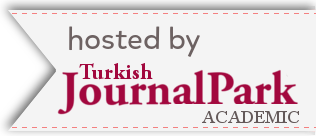The efficacy of silymarin in the treatment of physiological neonatal jaundice: A randomized, double-blind, placebo-controlled, clinical trial
Abstract
Patients and methods: A randomized double-blind clinical trial was conducted in170 full term healthy neonates with UCB in two well-matched groups. 85 received oral 0.75mg/kg of Silymarin twice daily plus phototherapy and 85 neonates received placebo and phototherapy. Total serum bilirubin (TSB) was measured every 24h, SGPT and SGOT level were measured before and after therapy for both groups.
Results: The mean duration of phototherapy was found to be significantly reduced from 5.3± 0.82 days in the control group to 4.2± 0.76 days in Silymarin-treated group (p=0.001). SGPT and SGOT levels were significantly normalized (p=.001).
Conclusion: Silymarin dose of 3.75 mg/kg twice daily along with phototherapy was more effective than phototherapy alone in treating full term healthy neonates with UCB.
Keywords
Full Text:
e175References
Cohen, R.S., R.J. Wong, and D.K. Stevenson, Understanding neonatal jaundice: A perspective on causation. Pediatrics & Neonatology, 2010. 51(3): p. 1431
Lin, S., et al., Neonatal lupus erythematosus with cholestatic hepatitis. Journal of microbiology, immunology, and infection= Wei mian yu gan ran za zhi, 200 37(2): p. 131. Maisels, M., et al., Management of hyperbilirubinemia in the newborn infant 35 or more weeks of gestation. Pediatrics, 2004. 114(1): p. 297-316.
Maurer, H.M., et al., Reduction in concentration of total serum-bilirubin in offspring of women treated with phenobarbitone during pregnancy. The Lancet, 1968. 292(7560): p. 122-124.
Brown, A.K., et al., Efficacy of phototherapy in prevention and management of neonatal hyperbilirubinemia. Pediatrics, 1985. 75(2): p. 393.
De Carvalho, M., Treatment of neonatal hyperbilirubinemia. Jornal de Pediatria, 2001. 77(Supl 1): p. S
Javed, S., K. Kohli, and M. Ali, Patented Bioavailability Enhancement Techniques of Silymarin. Recent Patents on Drug Delivery 38; Formulation, 20 4(2): p. 145-152. Horne, S.H., Milk Thistle. natures field, 2006. 22(8). Ghosh, A., T. Ghosh, and S. Jain, Silymarin-A review on the Pharmacodynamics and Bioavailability Enhancement Approaches. Journal of Pharmaceutical Science and Technology, 2010. 2.
Radko, L. and W. Cybulski, Application of silymarin in human and animal medicine. J Pre-Clin Clin Res, 2007. 1: p. 22-26.
Post-White, J., E.J. Ladas, and K.M. Kelly, Advances in the use of milk thistle (Silybum marianum). Integrative cancer therapies, 2007. 6(2): p. 104-109.
Wellington, K. and B. Jarvis, Silymarin: a review of its clinical properties in the management of hepatic disorders. BioDrugs, 2001. 15(7): p. 465-489.
Allegaert, K., et al., Hepatic tolerance of repeated intravenous paracetamol administration in neonates. Pediatric Anesthesia, 2008. 18(5): p. 388-392.
Binder, G., et al., The course of neonatal cholestasis in congenital combined pituitary hormone deficiency. Journal of Pediatric Endocrinology and Metabolism, 2011. 20(6): p. 695-702.
Ichikawa, M., et al., Selectively high levels of serum interleukin 17 in a newborn Infant with progressive severe cholestasis. Pediatrics, 2010. 126(1): p. e247-e250.
